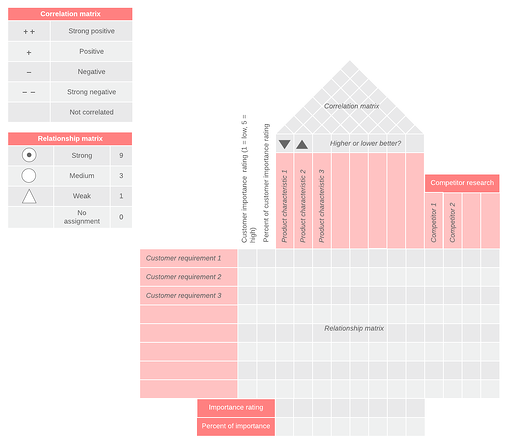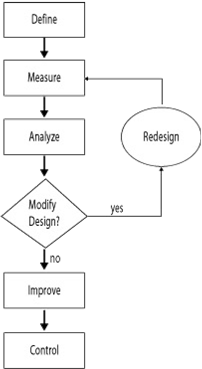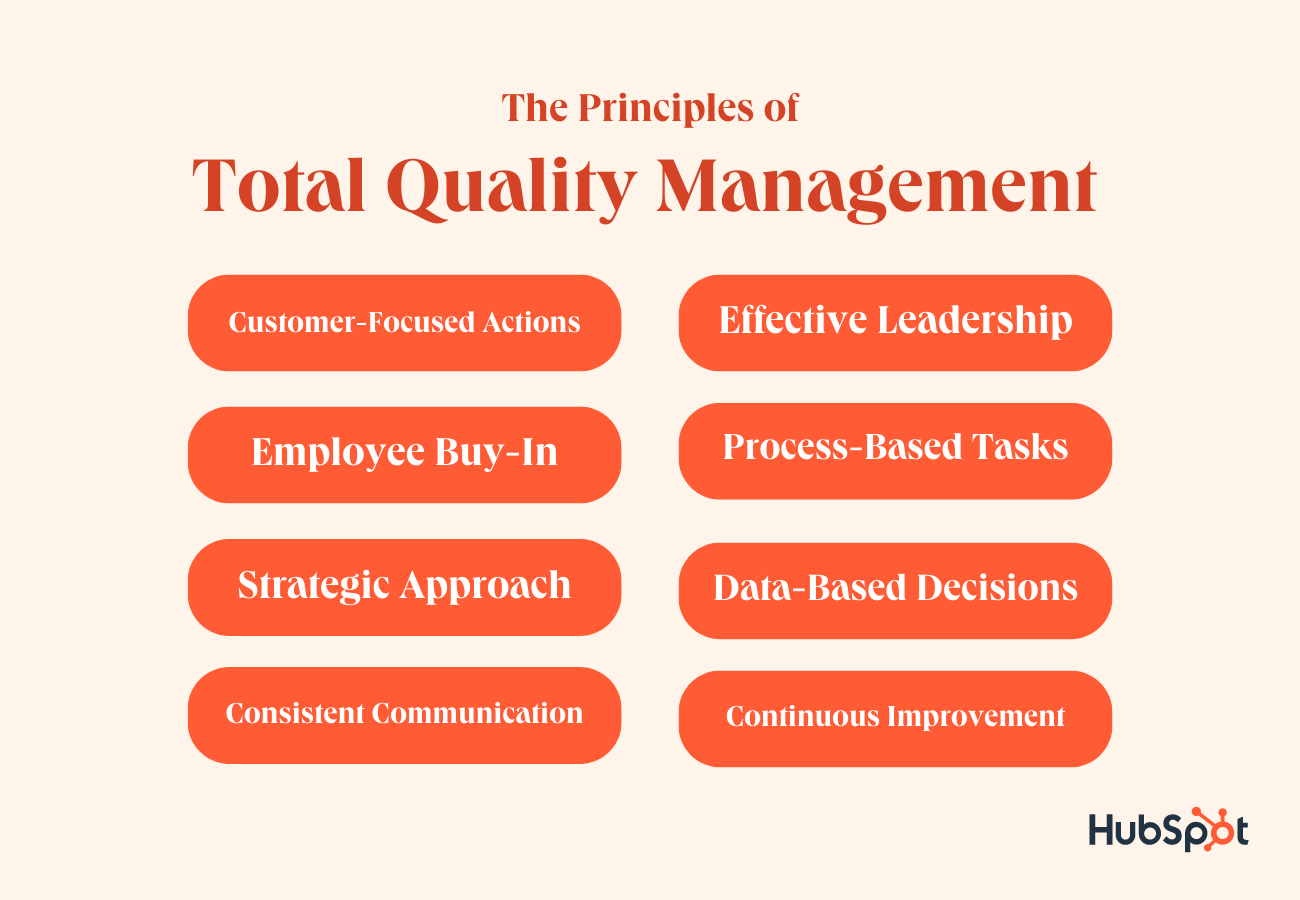The definition of TQM comes from each word in its name — Total Quality Management. First, Total describes the process as it involves all organization members, from order fulfillment to marketing to sales. Everyone is working towards the same goal, and all teams are accountable for results.
Access Now: Customer Support Strategy Template [Free Tool]
Quality represents the overall goal of TQM: an increase in product quality and the value it can provide to customers.
Management stems from managers and executives overseeing the process, identifying errors to be fixed, and improving efficiency.
Skip to:
What is Total Quality Management (TQM)?
Total Quality Management is a managerial framework that improves customer experience and product value through complete company buy-in and a streamlined organizational process.
The History of Total Quality Management
In the late 70s and early 80s, countries around the world took notice of the predecessor to Total Quality Management (TQM). Japan’s leadership in producing high-quality goods and services at a competitive price was inspiring on a global level and set the stage for the next big business strategy.
Other nations aimed to understand how Japan was achieving such success, and they uncovered a set of principles laid out by Dr. W. Edwards Deming. The principles are what we know now as the foundation of TQM: better product design, uniform product quality, improved product testing, and greater global market sales.
TQM Examples
While Total Quality Management is a model in and of itself, various strategies stem from key elements of the process. These models are suitable for differing business needs, and we’ll go over five of them below.
1. Quality Function Deployment
Quality Function Deployment focuses on the customer pillar of TQM, where business leaders consult with customers, understand their needs and expectations, and create a relationship matrix that provides an understanding of how the business is (or is not) meeting the customer needs.
The chart below is a common example of a TQM flowchart that managers use to decide a course of action and understand business performance in relation to customer needs.

Why we like the Quality Function Deployment Approach:
It‘s important to keep a TQM strategy objective and focused and the quality function deployment method does exactly that. This method has a clear framework that keeps things on track – plus, it’s easy to share with other departments in order to foster collaboration.
2. The Guru Approach
The guru approach uses the knowledge and understanding of key thinkers in the quality management industry as a business’ North Star, so to speak, towards understanding any shortfalls.
A manager may attend a workshop discussion or simply study a thought leader’s writings and work to implement the methods they’ve discovered. The following are notable thinkers in quality management:
What we like about The Guru Approach:
Since each person likely has their own interpretation, this method is valuable for organizations in a variety of industries as they can choose a leader that relates most to their needs.
3. Organizational Model Approach
This approach focuses on studying other businesses employing TQM to understand how they’ve achieved their success. When these metrics are identified, the business then works to understand how they can benefit from these methods and works to incorporate them into their processes.
What we like about the organizational model approach:
This approach is similar to the way TQM was started — American businesses analyzed Japanese companies' approach to customer satisfaction and quality manufacturing. This tried-and-true method to total quality management has been proven to work in many industries.
The key to making this approach work for your business is finding a company similar to yours in size, revenue, and industry that has used TQM successfully.
4. Award Criteria Approach
This strategy focuses on using the criteria of a reputable TQM quality award to identify areas of improvement. It’s essentially using the rubric for awarding the prize as a guide to discovering and implementing changes within a business because the award criteria define success.
What we like about the Award Criteria Approach:
If you don‘t have the time or resources to start a TQM strategy from scratch, taking an award criteria approach is a great place to start because the leg work has already been done for you. You’ll also have the bonus of potentially winning an award for your execution of the TQM strategy.
Here are a few reputable quality awards you can start with:
5. Six Sigma
Six Sigma is a strategy that aims to improve the quality of a business’ product or service by uncovering defects, identifying their causes, and improving upon faulty processes to produce better results. It’s a data-driven strategy that uses multiple statistical processes while following the DMAIC system: Define, Measure, Analyze, Improve, Control.

What we like about Six Sigma TQM:
Six Sigma is applicable across many industries including healthcare, finance, and education. This makes it great for businesses that are just starting to implement TQM and need access to resources and expert advice on this strategy.
Total Quality Management Benefits
This managerial process can provide a variety of benefits to businesses that choose to employ the strategy:
- Increased productivity. The whole team understands what is expected of them and how their tasks contribute to overall company success.
- Greater employee morale. Team members work with confidence to fulfill their job duties.
- Streamlined business processes. Managers create a framework with proven TQM methods so that day-to-day tasks aren’t unorganized.
TQM is essential to increasing customer satisfaction because business processes are developed specifically to provide higher quality goods as the first priority. In turn, this increases the company's value to its customers which justifies a higher price point for products and services. All of this ultimately leads to higher profits for the business.
Pros and Cons of TQM
These benefits make TQM a valuable and welcome framework in many industries like manufacturing, automotive, finance, and healthcare. However, there are pros and cons to using total quality management that other industries may face.
|
Pros |
Cons |
|
Lower costs to create and deliver products |
Upfront cost to implement TQM is high |
|
Streamlined processes that produce minimal waste |
Requires leaders who are skilled in TQM |
|
Higher productivity from motivated employees |
Adoption of TQM practices can take months to years |
To understand these trade offs in more detail, we need to look at some principles of total quality management.
The Principles of Total Quality Management
Since it is focused entirely on an overarching business strategy, sales managers need to understand the principles of TQM to be successful when implementing this strategy for their business.

Customer-Focused Actions
Total Quality Management is a customer-focused approach. Its goal is to modify the product and service development process so that they're more valuable to the customer.
To have a customer-focused TQM process, start by determining your customers’ needs, desires, and roadblocks to success. You can get more information about your customers by creating buyer personas, soliciting customer reviews and or feedback, and conducting customer interviews.
Overall, this means that although TQM can help your business (through increased productivity), the entire process you come up with should be based on solving for the customer.
Effective Leadership
Although it involves the entire company, TQM is a management style established, coordinated, and led by company leaders.
You, the manager, work to unite your organization and develop strategies and plans that provide your employees with the training they need to succeed and a sense of direction from the processes you lay out for them.
Essentially, you’re one of the fundamental pillars of the TQM process's success. Without setting goals and objectives and actively communicating with employees, it will be challenging to achieve success.
Total Employee Buy-In
Another key element of TQM is the total aspect — all employees participate and work together to meet common goals. Without total buy-in, it will be difficult to achieve the successes you’re hoping for because your teams won’t all be aligned.
To encourage business-wide participation, provide employees with all necessary training. When employees feel prepared, and like their managers are working to help them feel prepared, they’re more likely to be willing to participate because they feel like they’ll be included and supported through the process.
You can also work to encourage buy-in by diminishing feelings of fear of punishment. Emphasize that TQM is a living management style, as there are bound to be changes and roadblocks along the way that will be addressed as a whole. Problems that arise result from changes that are being adapted to or because of something that has been troubleshot wrong, not because of an individual employee.
Encouraging this buy-in can also become more manageable when you acknowledge successes as they happen, so employees can feel proud of their accomplishments and understand that hard work is paying off. In turn, this also inspires retention, pride, and accountability in your employees.
Process-Based Tasks
This management style is also process-based. While you may realize that something needs to change, you can’t just say okay, let’s change and expect to succeed. You need to identify areas for improvement, understand failures and roadblocks, and develop a strategy that will help you encourage and empower your employees to succeed in their new job processes.
It’s also important to realize that, as a manager, failure isn’t a be-all-end-all. Failure can inform your process and help you uncover overlooked opportunities for change.
Strategic Approach
Just as TQM is process-based, it also heavily relies on strategic management of the many processes you’ve developed. By doing this, you can ensure that all teams are accurately sticking to their processes and producing products or services that will provide the most value to your customers.
You can think of it like this: since TQM is successful through company-wide participation, multiple teams work together. However, all of these teams don’t necessarily do the same work. You’ve likely created different processes and plans for each team according to their respective job descriptions, like different tasks for marketing, product teams, and customer-facing employees. The strategic aspect comes into play because you’re managing various processes and ensuring they work in conjunction with each other as a cohesive strategy.
Data-Based Decisions
You can’t just make assumptions about performance; you need concrete data to draw accurate conclusions to understand how your TQM process is going. Aim to continuously collect data and analyze it to make further decisions, changes, and improvements.
Consistent Communication
If TQM is an entirely new strategy for you, it’s also new to your employees. Effective and consistent communication plays a large role in maintaining employee morale, especially for a new approach that may make your employees nervous. If everyone knows what’s going on, and how your processes are going, employees will feel more confident in their job processes rather than floundering in confusion.
Consider creating official lines of contact with all teams, employees, and stakeholders and conducting regular group and individual check-ins to ensure that everyone is on the same page.
Continuous Improvement
As mentioned before, TQM is a continuous, evolving process. Since it’s all about providing increased value to customers, continuous improvement to your process is imperative to better meet customer needs. Something that they may desire today may not be the same thing they want in two years. It’s important to recognize this and to address and make changes to your strategy whenever necessary.
Focus on the Quality of Your Products and Services
All-in-all, TQM is meant to provide one of the elements of its name: quality. While it involves business changes, it is centered around creating these changes to ensure customer satisfaction and loyalty.
Take the time to understand the basics of TQM and choose an implementation strategy that works for your business. You’ll likely find yourself managing teams of employees that are inspired to work together and create products and services that your customers love to use.
Editor's note: This post was originally published in January 2021 and has been updated for comprehensiveness.
Customer Satisfaction
.png?width=112&height=112&name=Image%20Hackathon%20%E2%80%93%20Vertical%20(9).png)



![Big Brands That Lost Customers' Satisfaction [Where CX Went Wrong + Data]](https://53.fs1.hubspotusercontent-na1.net/hubfs/53/companies%20that%20lost%20customers_featured.png)

![23 Excellent Customer Satisfaction Survey Examples [+ Templates]](https://53.fs1.hubspotusercontent-na1.net/hubfs/53/customer-satisfaction-survey-example_0.webp)




![How To Design Customer Satisfaction Surveys That Get Results [+ Templates]](https://53.fs1.hubspotusercontent-na1.net/hubfs/53/customersatisfactionsurvey.webp)
